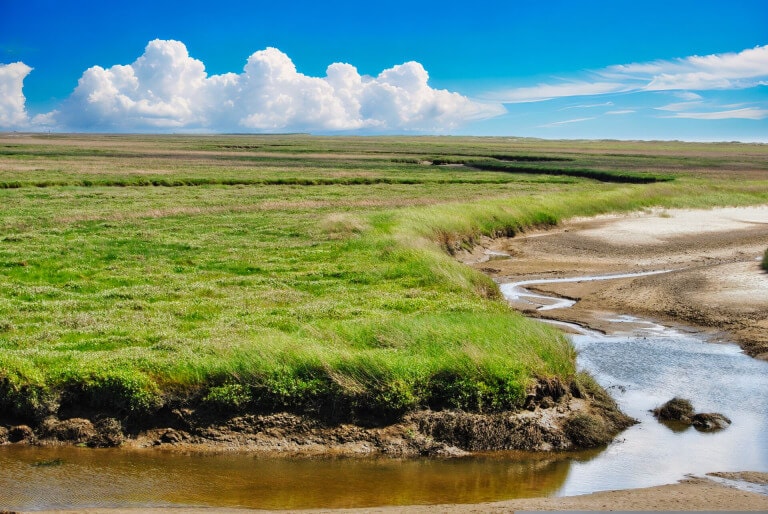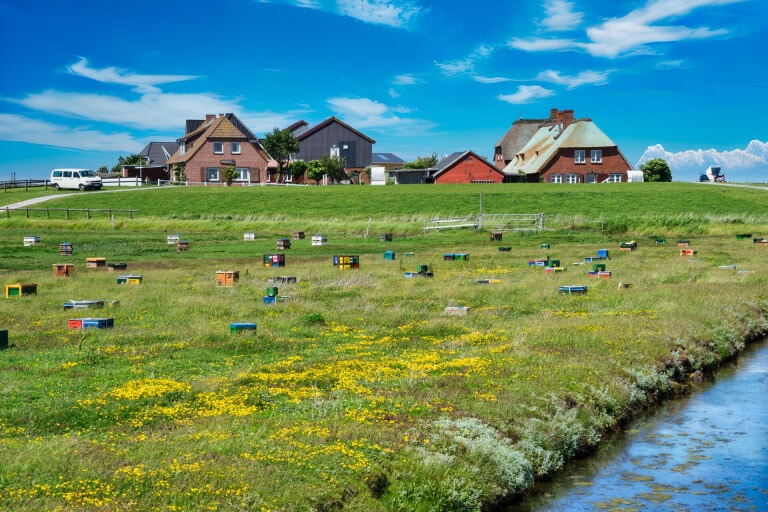A Hallig is a small, low-lying island on the North Frisian coast of Germany that is regularly flooded. They are usually surrounded by mudflats and salt marshes and are only accessible by boat or on foot at low tide. In total there are ten Halligen, each with its own history and culture. Hallig Gröde is one of them.
The history of Gröde
Gröde has a long and fascinating history. The first documented mention of the island dates back to the 16th century, when it was owned by a Danish nobleman. In the following centuries, the island changed hands several times and was used for agriculture and fishing. However, due to its low location, Gröde was always threatened by flooding, and the inhabitants had to constantly adapt to the changes in sea level and weather conditions.
In the 19th century, the island was hit by a series of devastating storms that wiped out much of the population and destroyed many homes and farms. To protect themselves from future disasters, the inhabitants began working on a system of coastal protection measures, including dikes and coastal walls. These efforts were successful, and Gröde has not experienced any major floods since.
Today the population is small but resilient. Only eleven people live on the island, but they have managed to build a sustainable and self-sufficient community that thrives on tourism and agriculture. The island is also home to a unique culture and way of life, closely linked to the sea and the land.
Life on the island
Despite its small population, it is a lively and active community. The inhabitants are known for their hospitality and friendliness and welcome visitors during the Vacation at the North Sea from all over the world welcome to learn their way of life. On the island there are a number of cottages and guesthouses that can be rented throughout the year. Visitors can go fishing, bird watching, hiking and cycling and enjoy the unique landscape and culture of the Halligen.
Agriculture on the Hallig is based on a system of communal land use, the so-called commons. This means that all residents have access to a certain area of land, which they cultivate together and whose care and harvest they share. The main crops grown here are potatoes and rye, which are well suited to the island's climate and soil.
In addition to tourism and agriculture, many residents work for the Schleswig-Holstein State Office for Coastal Protection, National Park and Marine Conservation, which is responsible for maintaining the coastal protection measures that protect the island from flooding. This work is vital to the island's survival and ensures that future generations can enjoy the unique culture and landscape.





